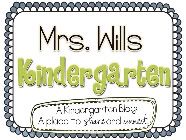In Part 2, of this book, Katie Wood Ray begins to get into the “meat” of the illustrative techniques! This section is all about looking at illustrations with “new eyes.”
She will break the techniques into 5 different categories, and over the course of the next few weeks, we will explore techniques within those categories. The categories are:
1. Ideas and Content
2. Precision and Detail
3. Wholeness of Text
4. Tone
5. Layout and Design
Ray explains each technique in a predictable format each time. You can read in more detail how she does this over at Mrs. Wills blog. But, I will say that I love how she tells us exactly what kids need to look for (what we need to tell them), and how to say it. Sometimes it is difficult to figure out the write words to explain something.
Here are the techniques for ideas and content in chapter 7:
1. Crafting with Distance Perspective
2. Crafting with Positioning Perspective
3. Crafting the Background
4. Showing Two Sides of a Physical Space
5. Using Scenes to Show Different Actions
6. Using Scenes to Capture the Passage of Time
7. Using Scenes to Show Movement Through Different Places
8. Using Scenes as a List
9. Showing, Not Telling
10. Crafting a “backstory”
11. Manipulating Point of View for Effect
12. Seeing Through the the Eyes of a Narrator
Wow. That’s 12 mini-lessons just in 1 chapter! As I was reading I found myself thinking of books and their illustrations in such a new way! Now many of these techniques might be a little tricky for our little K babies – since many of them are still struggling to draw a house or a person. But, with enough modeling, and pointing out these techniques as we read books throughout the day (not just during writer’s workshop), when they are ready, they will start to try new techniques.
So, I’m just going to point out a few books that I thought about as I read. I really wish I had my classroom library at home, but for now, my home library will have to do!
Technique #9: Showing, Not Telling
My 5 year old daughter ADORES this book. I know she dreams of I day that I will say YES to everything!
The illustrations are bright and vibrant, and there are very little words – the illustrations really tell the story. She didn’t completely understand the book the first time we read it, and I had to guide her through the illustrations, but after a few times, she got it….and we have to read it every night.
Technique #2: Crafting with Positioning Perspective
I love how the illustrator shows the little entomologist going way down to the ground to peek at the insects.
Technique # 6: Using Scenes to Capture the Passage of Time
Yes! It’s okay to use one book over and over! This in essence creates a mentor text for your kiddos. They begin to know the book so well! This is a great example of passage over time.
and
Technique #1: Crafting with Distance Perspective
Can you see that the kitty is close up and the little white rabbit is far away?
Cheryl over at Primary Graffiti has created some fantastic posters to correspond with the techniques in Chapter 7. Be sure to stop by her blog to grab them!
Now, stop back on over to Mrs. Wills blog and link up your thoughts for chapter 7 and enter to win a $25 gift certificate to the Clever School Teacher!














































